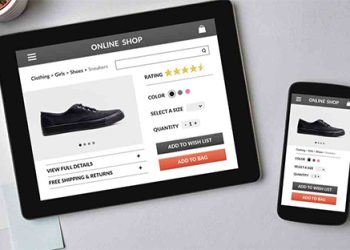Even the best college degree in web design will not automatically turn you into a sought-after web designer. Therefore, you should get serious about developing skills in both design and tools in practice with real clients, promote your portfolio, look for potential employers and present your services to them.
There are a lot of tools now, skill requirements are also growing, and universities are not keeping up with top designers and studios, so we grouped the freshest ones by area and highlighted the key ones so that you can navigate the actual heights that should be worked out to become a web designer.
Design Theory and Visual Design
Web designers are well-versed in visual design concepts and are skilled in the following areas:
Composition
You need to understand how to layout websites with organized information using a column grid, vertical rhythm, and module, and be able to adapt the design to different screen sizes – create a responsive design.
Typography
Choose font combinations that are easy to read, eye-catching, and exciting for targeted activities, as well as font combinations that reflect the brand’s language and match. Keep your design system consistent by sticking to one or two major typefaces with a wide range of weights.
Color Theory
Color helps create a mood and set the mood for a website visitor. Study the psychology of color, and explore the effect of color combinations on feelings.
Visual design is a whole science, we can’t cover it within the framework of this article.
User Experience (UX)
Good websites are beautiful and functional, and a web designer helps make them that way.
UX design is the art and science of creating products (or websites) that provide the greatest possible user experience.
Many of the elements of visual design that we discussed above affect how a site is perceived by visitors, but UX design also includes how products evoke certain feelings in visitors.
UX designers think less about the technology behind the site and more about user experience and the fit of the created experience to user needs. Sometimes this requires extensive user research and an understanding of the principles of perceptual psychology and interaction design. Check out our current selection of 7 courses on UX and interface design if you’re searching for additional UX practice.
It is important for web designers to learn the basics of UX design and the fundamentals of user interface (UX/UI) design:
Persons and Works (JTBD)
Creating generalized images of the target audience and their needs helps to ensure that each design solution will appeal to customers (will be useful and cause emotional delight).
User research (UX/CX-research)
Hotjar helps a lot with this, with it you can study heat maps, and conduct user surveys – everything you need to quickly understand the reasons for the behavior and motivation of site visitors.
Testing of the user’s experience
Testing a site with real users may assist uncover areas where visitors become stuck or confused, as well as areas where a design’s value might be increased.
It is not difficult if approached comprehensively. Information architecture is a story about the location of information on the site: what pages should be on the site, what items should be on the menu, and Which blocks, in what sequence, must be on the page so that people may discover the answer?. It can be done well only by applying SEO analysis and an interview with a specialist from the subject area (the customer or an involved expert who knows well what the site is about). Without analyzing search queries (the actual interests of users) and comparing them with practical expertise, the site will turn out to be a toy, and not close to reality.
Wireframing
Just like you wouldn’t build a house without a plan, you shouldn’t build a website without blueprints and a plan.
The wireframe allows you to decide the major parts and composition on the site’s pages in detail, without sketching the tiniest details, at a level that allows you to judge “what will be where and how it will operate.” Try using a tool like Balsamiq to rapidly toss in website design.
Web design focused on conversions
Companies and clients won’t shell out thousands of dollars for a new site just because it’s beautiful. They need the top-notch design to deliver business results – in fact, 48% of people indicated that website design is the #1 factor in determining business credibility.
Web designers simply need to create sites that motivate visitors to take the desired action, from signing up for a mailing list to purchasing a product and providing their contact information.
This indicates that web designers must understand how to design for conversions, which refers to the number of users who do specific activities on a website, such as joining a mailing list, purchasing a product, or providing contact information for future consumers.
It’s a complex skill, from copywriting compelling text to reducing the number of decisions visitors need to make.
Here are some web design skills and tools you should learn:
Design and layout tools for websites: WordPress plugins like Divi or Beaver Builder may be a terrific alternative for designers who want to develop attractive and functional websites for customers without the burden of coding. Even if you don’t have any programming skills, you can still make great websites.
Graphic design tools: You can quickly create a functional and beautiful website with a team in Figma and Sketch. And Photoshop is now back in the position for which it was born: the development of unique (any expressiveness) brand graphics without creative restrictions.
















